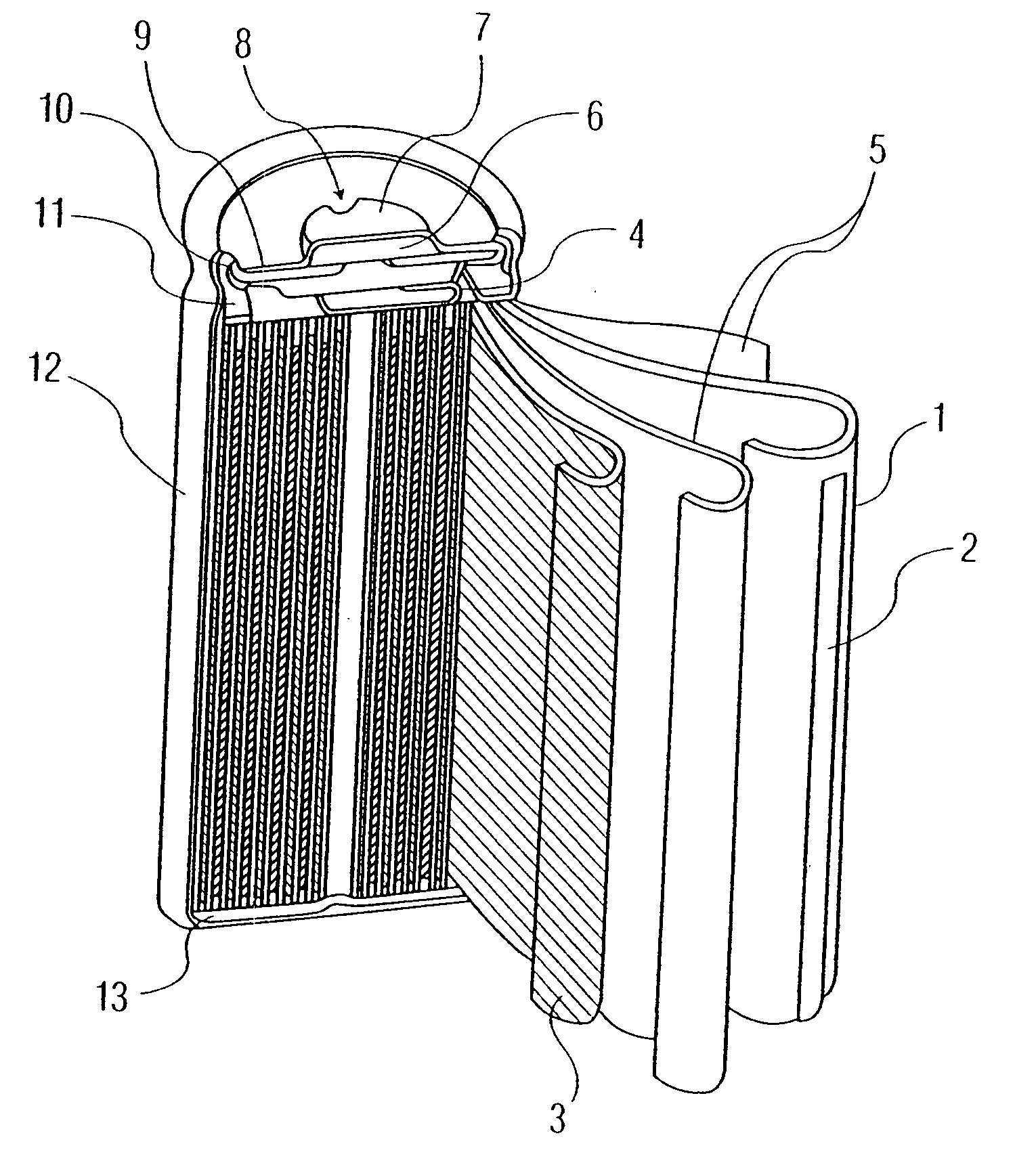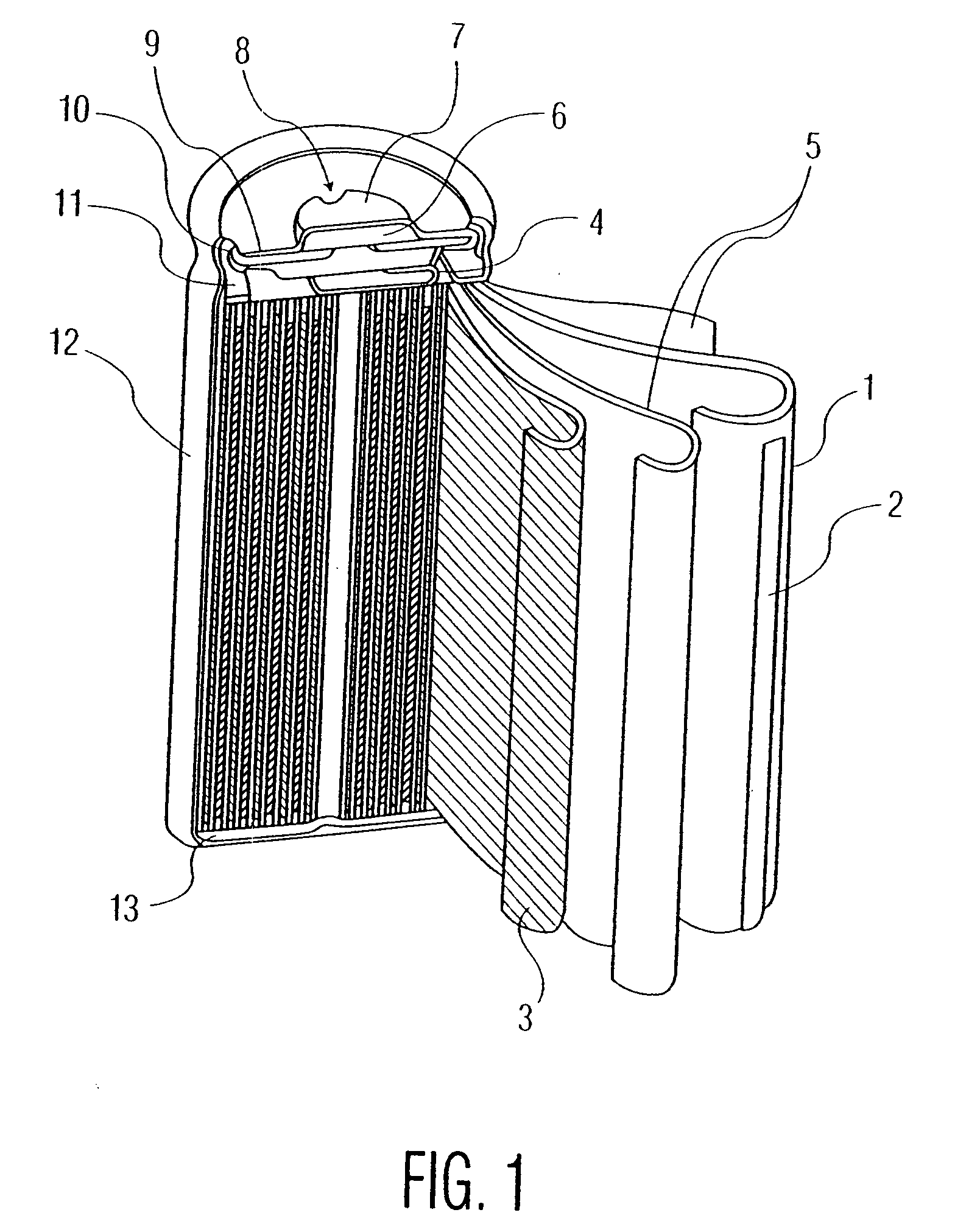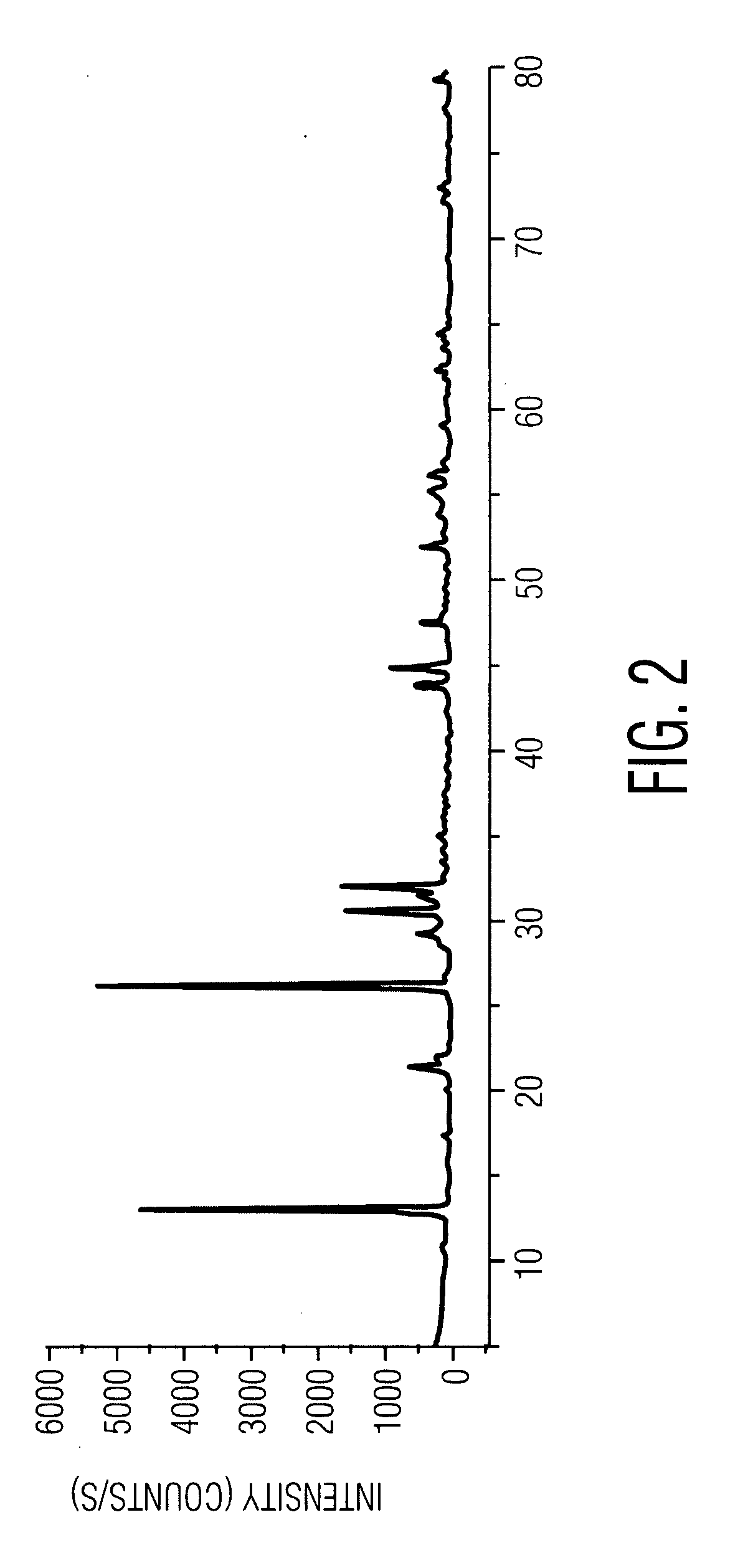Electrode active material for non-aqueous secondary batteries
- Summary
- Abstract
- Description
- Claims
- Application Information
AI Technical Summary
Benefits of technology
Problems solved by technology
Method used
Image
Examples
example 1
[0061]This Example illustrates the preparation of electrode active materials of the invention. Elemental silicon, elemental phosphorus, and, optionally, elemental tin, were mixed in a ZrO2 planetary ball mill. Four zirconium oxide balls were used to grind the material. The grinding speed and time were varied to achieve homogeneous mixing of the materials with minimum loss of zirconium oxide ball weight. Table 1 lists the experimental conditions for the mixing of the starting materials. Table 2 lists the reaction condition for the solid state reactions. Quenching was carried out by quenching in liquid nitrogen (LN2) or by furnace cooling (FC). Powder X-ray diffraction patterns were recorded using Rigaku powder x-ray diffractometer.
TABLE 1AmountAmountAmountGrindingBall / totalof Siof Pof SnconditionsTimesampleNo.(mol)(mol)(mmol)(rpm)(h)mass ratio10.120.05None20038:120.120.058.2820038:1
[0062]These powders were pressed into pellets (0.78 mm dia; 15 M Pa) and sealed into evacuated SiO2 amp...
example 2
[0064]This Example illustrates the preparation of batteries for the evaluation of the electrode active materials of the invention. The electrode active material, carbon black as a conductive material, polyvinylidene fluoride (PVDF) binder, and N-methyl pyrollidone (NMP) solvent were well mixed. The resulting mixture was coated single side of a 10 micrometer thick copper foil with a doctor blade, dried at 80° C. for 4 hr, and calendared to a thickness of 150 micrometer.
[0065]For testing purposes, lithium metal was used as the opposite electrode. Because Li+ / Li has a lower potential than the electrode active materials of the invention, the lithium electrode becomes the negative electrode, and the electrode comprising the active material of the invention becomes the positive electrode. However, the electrode active materials of the invention are negative with respect to many commonly used electrode active material, such as LiCoO2.
[0066]The lithium electrode was fabricated by cutting li...
example 3
[0068]A Swagelok cell was fabricated following the procedure of Example 2, using SiP prepared in Example 1 (Sample #3) as the electrode active material. A CELGUARD® #2320 PE separator and electrolyte of 25 wt % of 1.25 M LiPF6 in ethylene carbonate and 75 wt % of ethyl methyl carbonate were used.
TABLE 3ActiveBinderKetzen ®Total Capacity (mAh / g)Material(PVDF)Black0.050.10.51.0Sample(%)(%)(%)CCCCSiP74.315.110.61307905568416SiP42.841.315.917801191702539
[0069]The electrochemical curve shows different plateaus upon lithium insertion and the total discharge capacity of (3 to 0 volt) about 3500 mAh / g at 0.05 C rate was observed. The charge capacity of 1780 mAh / g was observed for the first cycle with 0.05 C rate, 1191 mAh / g for the second cycle with 0.1 C rate, 702 mAh / g for the third cycle with 0.5 C rate and 539 mAh / g for the fourth cycle with 1 C rate respectively. An insertion or de-insertion rate of 1 C is the insertion or de-insertion of one lithium / hr per formula unit of the material...
PUM
 Login to View More
Login to View More Abstract
Description
Claims
Application Information
 Login to View More
Login to View More - R&D
- Intellectual Property
- Life Sciences
- Materials
- Tech Scout
- Unparalleled Data Quality
- Higher Quality Content
- 60% Fewer Hallucinations
Browse by: Latest US Patents, China's latest patents, Technical Efficacy Thesaurus, Application Domain, Technology Topic, Popular Technical Reports.
© 2025 PatSnap. All rights reserved.Legal|Privacy policy|Modern Slavery Act Transparency Statement|Sitemap|About US| Contact US: help@patsnap.com



